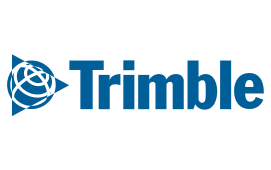The Bidding Phase
Here Is Some Advice on How to Leverage Those Bid Opportunities to Increase Your Jobs and Grow Your Company…
The bidding phase of a project is an important time for subcontractors. On average, subs have about 7-10 days to prepare and submit a quality bid to a General Contractor. They can also use this time to develop a relationship with the GC, which will help them win the job they’re bidding and position their company for future bid opportunities with that GC. Most projects are still competitively bid.
- In most cases, gcs look for subs to bid their projects by attending builders’ exchanges, associations, and construction networks.
It’s important to make sure you have a notable presence in one or all of these networks and promoting the qualifications of your company. Doing this increases your chances of bidding new projects - Always open and respond to any invitation to bid as soon as possible.
If there’s a job you’re interested in, inform the GC know that you’re bidding. If a GC doesn’t get a prompt response to their bid invitations, they usually message more subs. This increases your competition. Suppose you realize you aren’t interested in this job; tell the GC you’ve decided not to bid. Even if you decline bidding, responsiveness will often lead to additional bid opportunities from that GC. - Carefully examine the GC’s bid invitation and any documents they include.
You’ll want to be sure the 1) project is geographically located in an area that you service, 2) that you have sufficient time to organize a quality bid, and 3) that this is a job where you are qualified to install the specified products. Sometimes the architect doesn’t specify a particular manufacturer or will allow an approved equivalent. This will help you to bid your product only if it meets the technical specifications the architect has for the project. You should also evaluate the additional trades the project will require. It’s possible there will be more bidding opportunities than you were initially invited to by the GC. - Attend any pre-bid meeding the GC conducts.
This meeting will provide a chance to ask questions or express any concerns about the upcoming project. It also demonstrates commitment to the bid; the GC will likely appreciate this. Additionally, GCs tend to favor subs that they know personally, so a competitive edge can be gained by establishing an early relationship. - Call the project owner to request a complete list of GC bidders.
If only one GC invited you to bid on a project, the contact information of other bidders can usually be found on the plan cover sheet. Take the time to prepare your bid and make sure all the other bidders have your bid. This increases your chances of winning the job. - Include any information the GC needs to evaluate your bid when preparing your proposal.
This includes factors like alternates, unit prices, addendums, scope of work, and product literature. Your proposal should clearly identify the categories and divisions that you are bidding and emphasize any omissions or additions with an explanation. Be sure to include the “issue date” of any plans and specifications that you added to your bid as a protection in the event of any discrepancies. Don’t forget to identify your bid’s expiration date in case there’s a delay in a decision on the project award. A delay like this could affect the pricing stated in your bid. Finally, make sure your company’s updated qualification form is included. Information like this could encourage a GC to add you to their private database, which might mean future bid opportunities. - Your bid should be submitted no later than the specified day and time on the GCs invitation.
Normally, GC’s submit their bids to the project’s owner or architect as soon as the day after they receive their subs’ bids. Most GCs need to take a day to review sub plans to help them prepare their “General Contract” bid. - Many GCs still accept subs’ bid proposals by email, courier, or fax.
However, many GCs are now only allowing their subs to submit bids into a cloud-based portal that’s internet-based and private, created just for them. This use of technology streamlines bid submittals and eliminates the frustration of failed faxes and missed emails, especially emails with large file attachments. - Call the GC to get an update on the project about 2-3 weeks after your bid is submitted.
This is the time to find out if a bid was awarded, and if so, when they will be awarding the subcontractors. Suppose the GC was not awarded the project, ask what GC did receive it. This could give you an additional opportunity to win the job. Don’t hesitate to ask about upcoming bids while you’re on the phone. - Consider your specialties and bid on projects that target them.
Doing this will make your bid more competitive. Provide GCs with your company’s prior experiences, certifications, and qualifications to increase bid opportunities. Promoting your company’s profile in warriors networks, such as The Blue Book Building & Construction Network®, is the best way to go about this.
There’s nothing easy about competitive bidding. Most of the time, subs have to bid an average of 5-10 jobs just to win one. The tips above should help improve your Bid-Hit ratio.
Charter Estimating is a professional electrical and pre-construction estimating company that offers long term and short-term estimating solutions for contractors around the nation. Whether you are looking for part-time, full-time, or more than one estimator, we are always here to help you further your company’s goals. Get in touch with us today!

Contact Us
Schedule a Consultation
(*) - Required field
Our Partners




